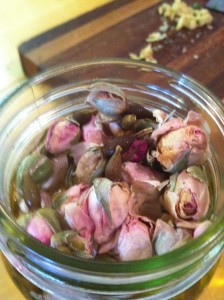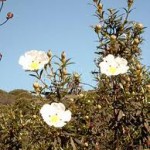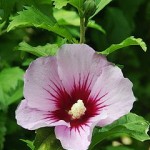Protecting our children & ourselves
Way back in the last century (1999) my 9 year old son and I were living in a home where I did childcare for two pre-school aged children. Three times that winter their whole family was diagnosed with strep throat, and took antibiotics for it. (They continued to eat cold yogurt, cheese, and other ayurvedically contraindicated things.) Even before their culture for strep was confirmed, I put one drop of a well researched antibacterial and antiviral blend of essential oils (Young Living’s Thieves) on my son’s throat, and 2 on my own throat (diluted with 1-2 drops of sesame oil), and applied a few more drops directly to our feet. I did this 3 times a day, and adjusted our diet away from cold, dairy and wheat for those few days. We did not get sick, though sharing a kitchen with this family. The third time it came up for them, I started to feel the tell-tale scratchy throat. My son and I each added one more drop of Thieves in the back of our throats 3-4 X a day. It stung, briefly. And WOW – immediately, the signs went away and stayed away! Now I may put a drop in ⅙ cup water and gargle instead – either way it stings but works fast.
Although streptococcus causes a bacterial infection, only about 5-10% of sore throats are actually bacterial — the rest are viral. I’ve worked with antiviral essential oils with amazing results, and often am asked by clients what they can do to most safely and gently protect their families when immune system is weak — like after childbirth, or during flu season. There are Ayurvedic insights on the use of essential oils, and diet, herbs and lifestyle changes which help refine our therapeutic choices when we are vulnerable (like choosing heating and drying substances for mucus problems and cooling substances for fevers, etc.) This wisdom also includes protecting our “head” or psychic space from fatigue, weakness and emotional impurity, since viruses can so easily enter our field if we are not feeling strong inside.
Fall and Spring are times of seasonal change when, as both public health stats and ancient Ayurveda explain, everyone is more vulnerable, and an illness can be easier to acquire and harder to kick. Right now children are returning to school, and bringing home colds and flus. And national news is reporting severe respiratory viral infections hospitalizing unusual numbers of children in this country, not to mention other scary virus trends around the world! Please get your essential oils first aid kit ready!
Here are my top choices for antiviral and respiratory supports, “distilled” from about 40 antiviral essential oils that I’ve come to know and love. First, the single oils:
Cassia and Cinnamon (two varieties of cinnamon): Jean Claude Lapraz, MD, found that viruses could not even live in the presence of cinnamon oil, so many of the best blends have this oil in them. Balance this for its hot, dry qualities.
Citrus peel oils: Inexpensive oils and good diffusers. More gentle antiviral and good for children (and inner children).
Eucalyptus (Eucalyptus radiata): Diffuses well, with benefits that cool and penetrate quickly. It is both antiviral and respiratory clearing.
Frankincense (Boswellia carterii): Specially valuable when the psychic space is fragile and compromised, this is an immunostimulant, mild antiviral and powerful anti-inflammatory.
Hyssop: Powerful antiviral used in biblical times during the plague. Balance for its hot, sharp, and drying qualities.
Tea Tree (Melaleuca sp.): Well known for its broad spectrum uses, tea tree is valuable and not too intense antiviral and antibacterial.
Myrtle & Lemon Myrtle: Gently pitta and vata pacifying, this good antiviral also supports endocrine and clears respiratory systems. Myrtle is very kind and diffuses well.
Oregano: Strongly heating and drying. When prepared using low temperature distillation it offers antiviral as well as antibacterial and antifungal benefits.
Thyme: Strongly heating and drying. When prepared using low temperature distillation it offers antiviral as well as the antibacterial and antifungal benefits.
I’m a Young Living EO fan because I have absolute faith in the purity and integrity of their oils. They have some amazing blended oils, and naturally I have some favorite antiviral blends. Well-combined blends are often better value than singles and have proven track records for broad spectrum effectiveness in one bottle.
** If you choose to take any essential oils internally, please be certain of the EO producer and the quality of their oils, and that they provide suitable instructions. Otherwise please do not use in this way.
Thieves — Blend with clove, lemon, cinnamon, eucalyptus radiata, rosemary: Number 1 for winter time and cold weather illness with excess kapha, and for boosting agni in Ayurvedic terms, it has strong antioxidant properties too. This blend was used in the 16th century plague time with unusual success — first by the body robbers of the dead and dying who were grounded from their shipping trade as oil and spice importers. Research shows over 95% kill rate on over 5 different groups of viruses plus highly antibacterial, antifungal effects.
RC — Blend with 3 eucalyptuses, myrtle, pine, cypress, lavender, oregano, peppermint and tsuga: Number 1 for inhalation for most respiratory issues, this has many antivirals in it also. Its sharp penetrating qualities are balanced by endocrine boosters, grounding evergreens and liver help. Balanced for multi-season use, valuable for diffuser method.
Raven — Blend with ravensara, eucalyptus radiata, peppermint, wintergreen and lemon: Also cooling and potent, it’s broad spectrum effects soothe inflammation, lungs, help kick phlegm, plus combat herpes and shingles.
Purification — Blend with citronella, lemongrass, lavendin, rosemary, melaleuca and myrtle: Good diffuser for kids coming and going from school and fragile postpartum families. This is useful in hot and cold weather illnesses and against environmental radiation.
Exodus II — Blend with cassia, myrrh, cinnamon, calamus, hyssop, galbanum, frankincense (Boswellia carteri), and spikenard (Nardostachys jatamansi): Biblical combo gives extra oomph on viral infections and kicking phlegm, and powerfully helps protect and clear the mind of high vata and kapha. Balance for hot, dry and penetrating qualities.
This list is offered for safe and powerful first aid for MANY uses besides antiviral and respiratory help. Over 5,000 research studies on essential oils are showing that they have significant therapeutic effects. Knowledge of Ayurveda enhances their use with guidelines for preventing vulnerability to disease.
With over 90% of the medicinal properties of many herbs evaporated when they are dried, essential oils are more potent for many uses. They offer highly respectable self and client care support, but need safe use and well balanced application. I’ve worked with essential oils for over 15 years, with respect and love for their blessings. I also know how overboard people get with them, forgetting the rest of their self-care homework, and Ayurvedic concerns for misuse.
Young Living oils test with 300-800 bio-constituents each, distilled to access each plant’s arsenal of integrated intelligence and protection like no drug can. It’s super important to know the quality of the essential oils you choose before using them for therapeutic purposes. A lot of extra care goes into creating a true therapeutic quality essential oil, and if your source distills many oils at the same temperature, they are likely missing key medicinal properties. The following guidelines are key for the kind of value I refer to:
- Organic seed, soils untainted by pollutants, and proper plant variety for desired effects
- Sustainably grown in their best climate and region around the world
- Sustainably teaming with local growers for the grower, planetary and plant best interests
- Grown without chemical pesticides, herbicides
- Harvested and distilled with precise timing to ensure peak properties
- First extractions only, according to the plant’s best/low temp and pressure to preserve bioconstituents
- No synthetic essential oils added
- Third-party plus in house cross-testing of every barrel
- Stand behind any recommended internal use of their oils
Obligatory and honest disclaimer: Of course there is so much more than even my long winded articles can say about making the best use of these oils. This discussion cannot be misconstrued as sufficient information to handle a disease on your own, and the severity of some of the issues facing the world today requires in our opinion, a combination of careful medical care from your doctor, and careful preventive and supportive self care for best results. This is not meant to replace the advice of your doctor or train you to diagnose, treat or cure any disease.



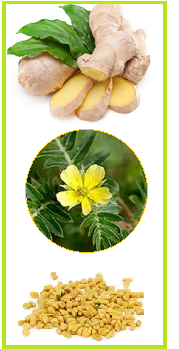
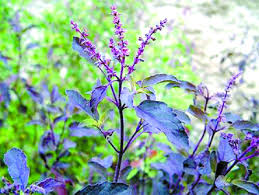
 Tulsi is anti-stress, and an adaptogen with special serotonin enhancing and sattvic gifts for mama and baby — qualities which naturally improve the mood and sense of well-being. Tulsi is less heavy to digest than many of the manas herbs, which makes it more helpful when kapha is high in the early springtime. The herb part used is usually the leaf. White or black tulsi beads are often worn to strengthen devotion and sattva as well.
Tulsi is anti-stress, and an adaptogen with special serotonin enhancing and sattvic gifts for mama and baby — qualities which naturally improve the mood and sense of well-being. Tulsi is less heavy to digest than many of the manas herbs, which makes it more helpful when kapha is high in the early springtime. The herb part used is usually the leaf. White or black tulsi beads are often worn to strengthen devotion and sattva as well.  Personified in Vedic tradition, Tulsi has a very benefic feminine energy and is thought to have divine powers which provide spiritual protection. Whenever you take a herb that is rich in divine intelligence, like tulsi, it can help to remove vibrational blocks in your system and strengthen your auric field. Mothers and newborns are in a state of tremendous openness, physically and energetically. Often they have been around negative energies or hospital environments where – many things go on and can create complications on this level too. It is important to protect them at this time, and Tulsi can be a lovely friend indeed. During kapha season look to safe postpartum blood and liver cleansing herbs. Choose ones whose impact on vata is not going to create more vata. Remember that in a new mom, vata is already pushing the other existing doshic and mental issues out of balance and you don’t want add to it by recommending an inappropriate herbal combination. Appropriate herbs may include guduchi, bringaraj, anantamool, and turmeric, with warming balance from such herbs as pippali or ginger.
Personified in Vedic tradition, Tulsi has a very benefic feminine energy and is thought to have divine powers which provide spiritual protection. Whenever you take a herb that is rich in divine intelligence, like tulsi, it can help to remove vibrational blocks in your system and strengthen your auric field. Mothers and newborns are in a state of tremendous openness, physically and energetically. Often they have been around negative energies or hospital environments where – many things go on and can create complications on this level too. It is important to protect them at this time, and Tulsi can be a lovely friend indeed. During kapha season look to safe postpartum blood and liver cleansing herbs. Choose ones whose impact on vata is not going to create more vata. Remember that in a new mom, vata is already pushing the other existing doshic and mental issues out of balance and you don’t want add to it by recommending an inappropriate herbal combination. Appropriate herbs may include guduchi, bringaraj, anantamool, and turmeric, with warming balance from such herbs as pippali or ginger.

